I care about the shortest path from real buyer intent to pipeline, clear ROI, and fewer moving parts. A high-functioning B2B SEO program should feel like an extension of your team, not another vendor to babysit. The playbook below shows how to capture quick wins without losing sight of compounding growth. It is practical, benchmarked, and built for B2B service leaders who care about profit, not pageviews.
Why this playbook matters
If you run a service business, you have likely felt this before: long sales cycles, ROI that is hard to pin down, and reports that look busy but do not change your week. You do not want to micromanage SEO, yet you still want to know exactly what will create measurable impact. My goal is to lay out a specific plan, the expected timelines, and the proof points you can use to judge if the work is on track.
TL;DR outcomes (directional, not guarantees - baseline, competition, and resources matter):
- Target lifts: 20-40% improvement in qualified rankings on bottom-funnel terms by month three, with steady gains over 6-12 months when foundations are sound.
- Pipeline effects: 15-30% increase in demo-ready inbound leads by quarter two, depending on ACV, sales cycle, and close rate.
- Cost efficiency: lower blended CAC as organic takes a larger share of sourced revenue over time.
The order of operations stays simple: fix what blocks crawling, publish buyer-intent pages, refresh assets that almost rank, and align analytics with how your CRM measures pipeline. Then keep executing until compounding takes over.
How I frame B2B SEO for services
I treat SEO like a software deployment: strategy as dev, pilots as staging, and your public site as prod. Longer sales cycles make this discipline essential.
- Dev: define ICPs and intent tiers. Use search analytics and customer calls to map how buyers look for solutions. Bottom-of-funnel queries like "managed IT services pricing," "SOC 2 audit service," or "ERP implementation company" tend to beat vague top-funnel topics when pipeline is the goal. Document decision timelines and the formats that help at each step.
- Staging: build a small cluster first - one offer page, two use-case pages, one pricing explainer, one comparison, and a case study mapped to the same theme. Test messaging, design, and conversion paths with a limited audience. Measure early signals, then adjust.
- Prod: ship the cluster as a release. Monitor indexing and internal link paths, address crawl waste, and validate lead quality in your CRM. Rinse and repeat with the next theme.
Keyword selection is where many teams drift. I start with bottom-funnel intent and the language your ICP actually uses. If your buyers say "IT staff augmentation" rather than "outsourced engineers," mirror that. Build clusters around jobs-to-be-done, then widen to mid-funnel and thought leadership once core pages hold stable positions. Caveat: in markets with limited bottom-funnel volume, mid-funnel content that feeds retargeting and sales enablement can be the practical on-ramp.
SEO ROI is slow - and fast: the 30/60/90 focus
Both can be true. If your site has technical debt or thin content, you can still create quick wins while compounding effects build. The trick is sequencing and visible progress every 30 days.
First 30 days
- Technical fixes: reduce index bloat, resolve 404s, correct canonicals, submit clean sitemaps, remove junk parameters, and improve templates that real users touch. Focus on crawl efficiency and Core Web Vitals for high-traffic layouts.
- BOFU page launch: ship at least two bottom-funnel assets - service pages with pricing guidance, a status-quo comparison, or an integration partner page with a clear next step.
- Lift the "almosts": pick three pages stuck in positions 8-20. Tighten titles and intros, add proof blocks, address People Also Ask questions, and strengthen internal links from navigation hubs.
Days 31-60
- Expand a cluster: add one use-case page, one industry page, and one testimonial or case study tied to the same offer. Layer structured data where relevant.
- Conversion refinement: clarify CTAs, reduce friction, and embed modular proof (case studies, ROI ranges, or timelines).
- Internal linking: route equity to revenue pages via header/footer and contextual links; clean up breadcrumbs.
Days 61-90
- Content velocity: maintain a weekly release rhythm around core themes with an editorial calendar that pairs queries to business goals.
- Authority growth: publish technical thought leadership or partner-aligned content that earns mentions; prioritize relevance and quality over volume.
- Scorecard cadence: track qualified rankings, organic contribution to demo requests, pipeline value, and closed revenue - tied in your CRM.
6-12 month effects to expect with consistent execution:
- Stable positions on bottom-funnel terms.
- A wider mid-funnel footprint that fuels retargeting and nurture.
- Lower dependency on paid spend to hit pipeline targets.
Model ROI with your data
Simple math keeps strategy honest:
- Inputs: baseline organic sessions, SQL conversion rate, close rate, ACV, and sales cycle length.
- Model: additional sessions x SQL conversion x close rate x ACV.
- Example: 5,000 extra monthly sessions x 2.5% SQL rate x 25% close rate x $30,000 ACV ≈ $937,500 in projected new bookings per month once steady state is reached. If your cycle is 90 days, shift revenue recognition accordingly.
This is a planning framework, not fantasy math. Use your CRM data instead of generic benchmarks, revisit monthly, and adjust when the data changes.
From rankings to revenue: page types and paths
Traffic is nice. Pipeline is better. You convert rankings into revenue by matching real buying steps and guiding users with clean paths.
- BOFU comparisons: contrast your approach with common alternatives and with doing nothing. Use plain language, pricing ranges, and outcomes. These often rank for "vs" and "alternative" terms and convert well.
- Solution pages by use case: break the service into jobs-to-be-done (security audit, cloud cost control, data pipeline maintenance). These typically carry high intent.
- Partner and integration pages: if you implement or support a platform, create pages for each partner with setup steps, pitfalls, and proof. Decision-makers often search here just before outreach.
- Case studies with intent keywords: lead with the problem, constraints, results, and numbers. Optimize for "[industry] [service] case study" and solution-specific terms.
- Targeted thought leadership: publish deep how-tos for technical buyers and practical playbooks for economic buyers. Use these to feed internal links to revenue pages.
Internal linking is the pressure system. Navigation should push equity to offers; blogs should link to relevant services with descriptive anchors; case studies should connect to the method and industry page. Conversion paths matter just as much:
- Place primary CTAs where scanners will see them, and add secondary CTAs like "see pricing ranges" or "view implementation timeline" for evaluators who are not ready to talk yet.
- Keep forms short; let proof and clarity do the heavy lifting.
What to watch in technical SEO and at events
If you want a pulse on what search engines reward next, keep an eye on technical topics and industry events that emphasize measurement and quality.
Topics that consistently matter
- How site quality is assessed at a section level (not just sitewide).
- Structured data for services, products, and reviews in B2B contexts.
- Crawl efficiency, rendering, and Core Web Vitals on high-traffic templates.
- How to maintain content velocity without sacrificing accuracy, especially if AI assists drafts.
- Changes tied to AI-generated SERP features and evolving "helpful content" guidance consolidated into core updates.
Where I find signal over noise
- Technical tracks that show how to measure site quality at scale and debug JavaScript-heavy pages.
- Strategy sessions that tie clusters to revenue, not just impressions.
- Measurement talks that connect analytics events to CRM milestones (SAL, SQL, pipeline stages).
- Sales and marketing alignment sessions on using content to shorten cycles.
Practical prep
- Collect competitor SERP snapshots two weeks before an event; note who holds top positions for your core services and why.
- Bring two live problems (e.g., a money page stuck at position 11); ask for three plausible causes and one fix to test first.
- If you use specific analytics or crawling tools, prepare pointed configuration questions that would make your reporting cleaner.
Run your own diagnostic and keep going
If this approach fits how you think about growth, a simple diagnostic can map the gap between the site you have and the pipeline you want:
- Baseline: current qualified rankings, organic share of pipeline, SQL rate, and close rate by segment.
- Friction: crawl waste, index bloat, thin or overlapping pages, and conversion blockers on high-intent templates.
- Focus: one bottom-funnel cluster to ship in the next 30 days, a 60-day expansion, and a 90-day scorecard you will actually review.
Recap to stay grounded
- Start with bottom-funnel intent and build small clusters that ship fast; treat content like product.
- Fix technical friction early so revenue pages can rank and convert.
- Model ROI with your numbers; revisit monthly and adjust to the data.
- Grow with use-case pages, partner pages, case studies, and selective thought leadership that earns links.
- Keep learning, filter noise, and implement only what moves revenue.
I will not promise magic. The pattern that works is disciplined sequencing, clear measurement, and relentless focus on buyer intent. Do that, and you get steady rankings, qualified inbound leads, and a healthier pipeline at a lower acquisition cost - the point of the exercise.

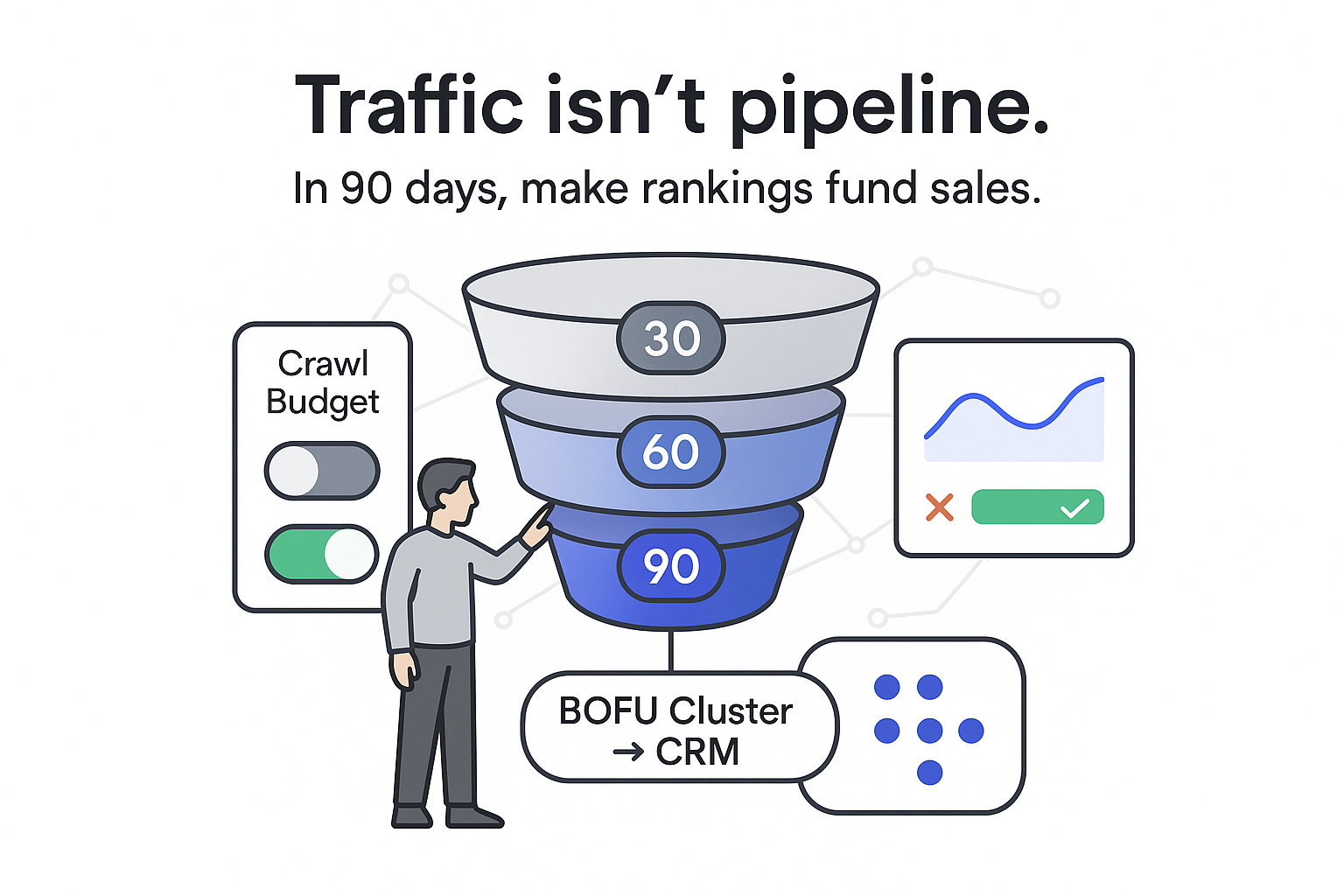

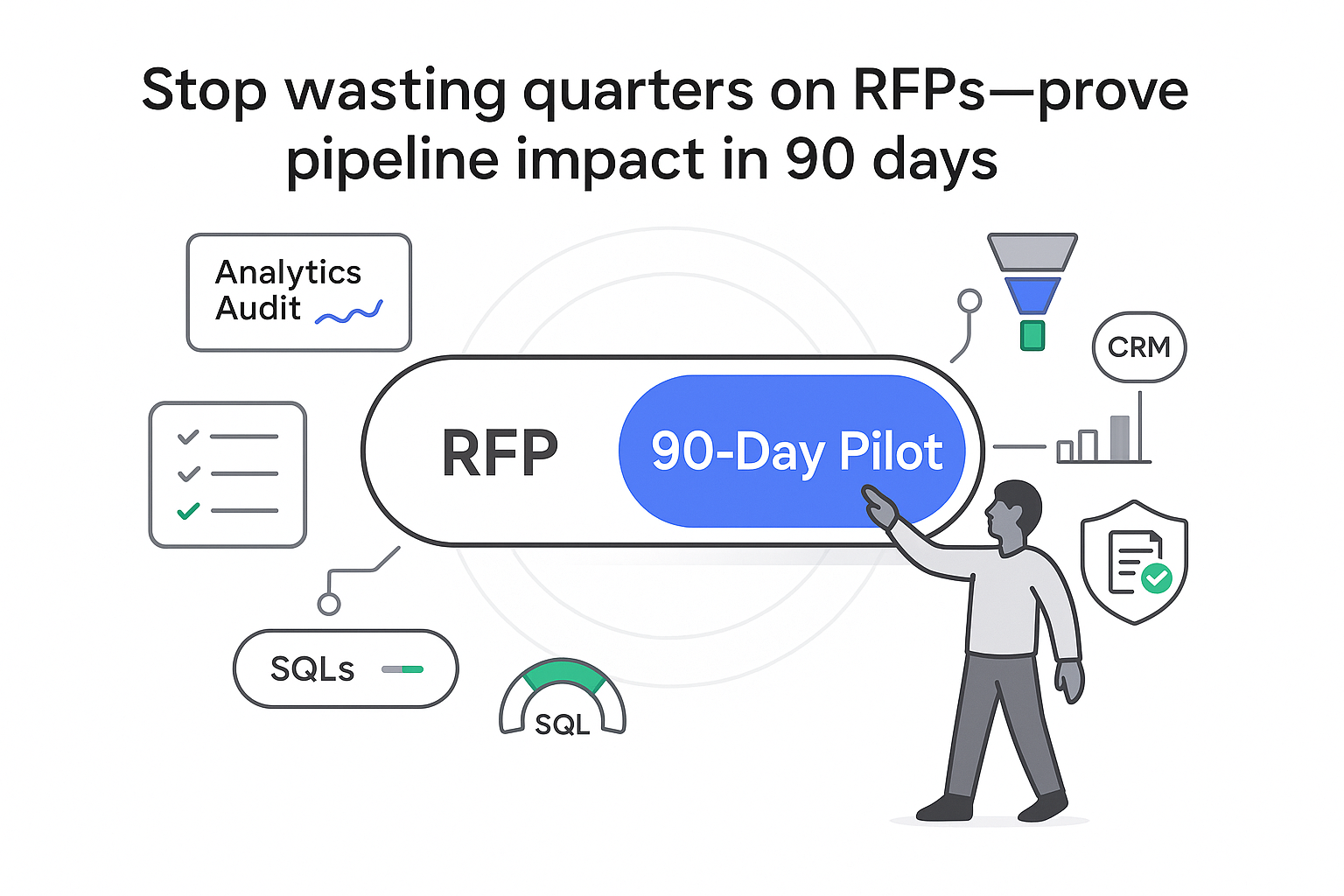
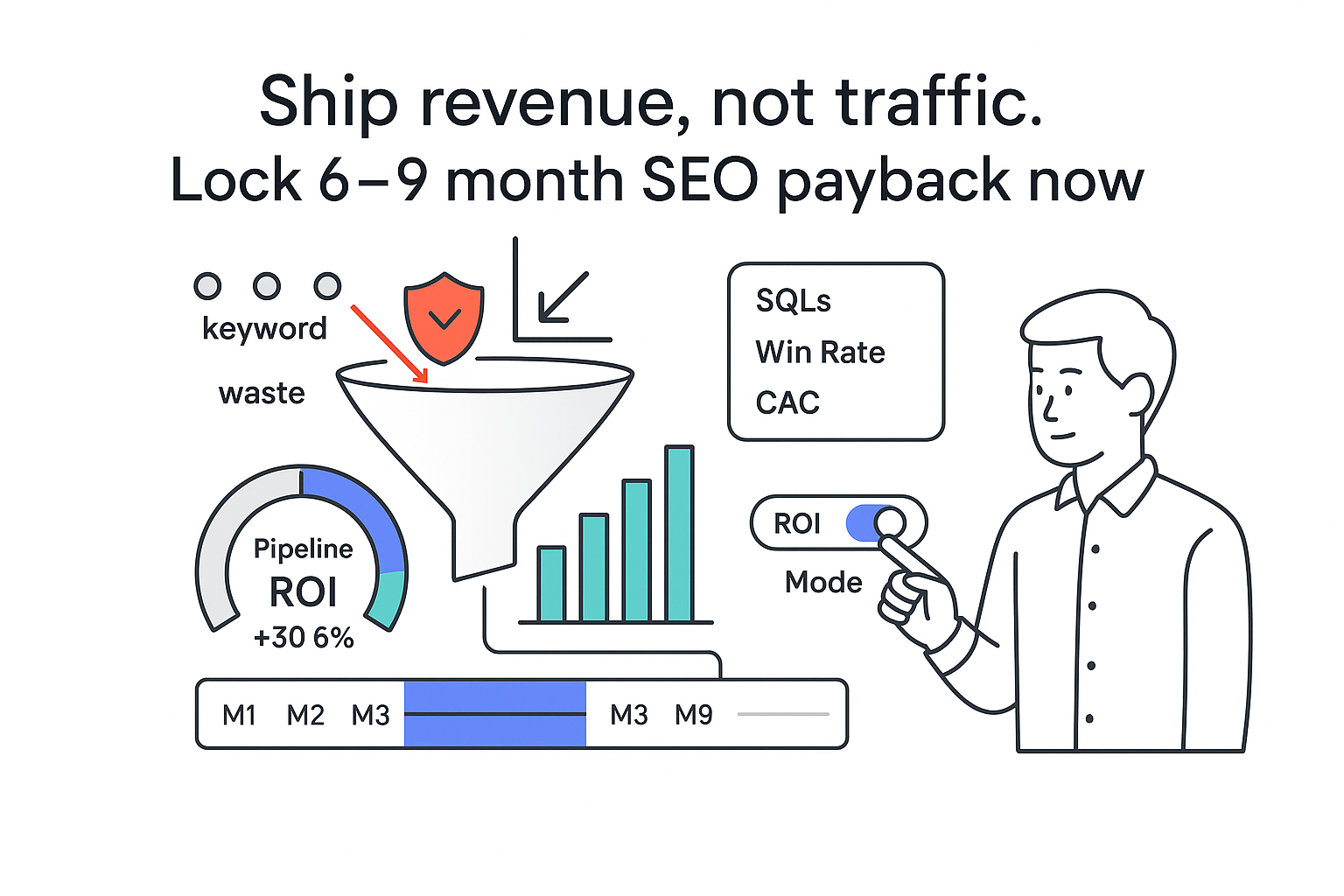
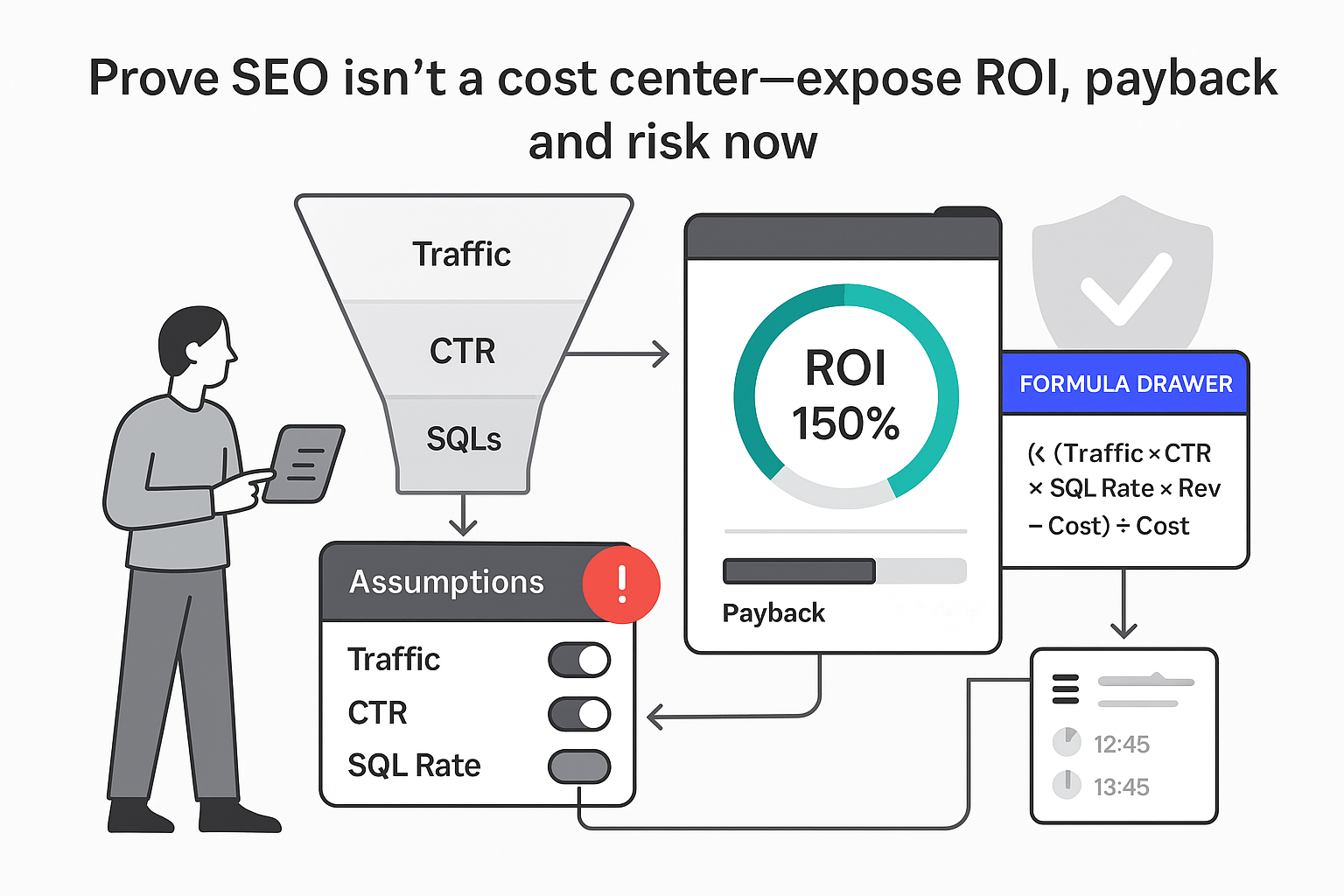
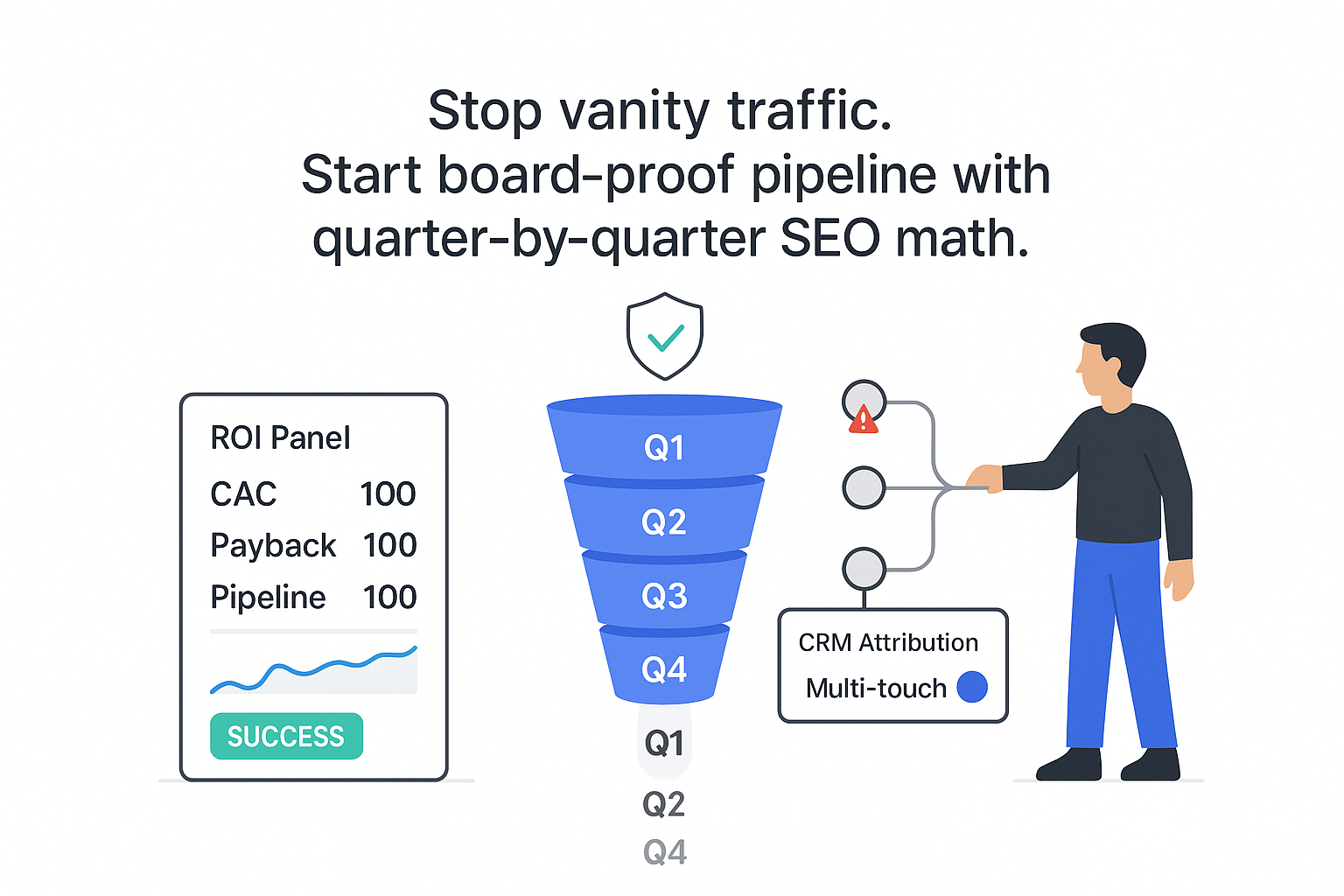
.svg)